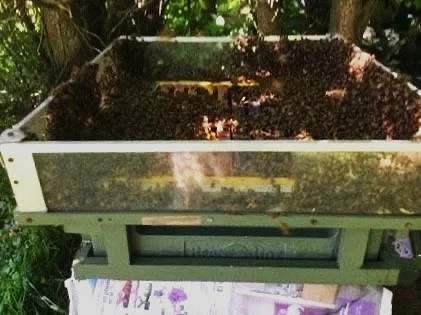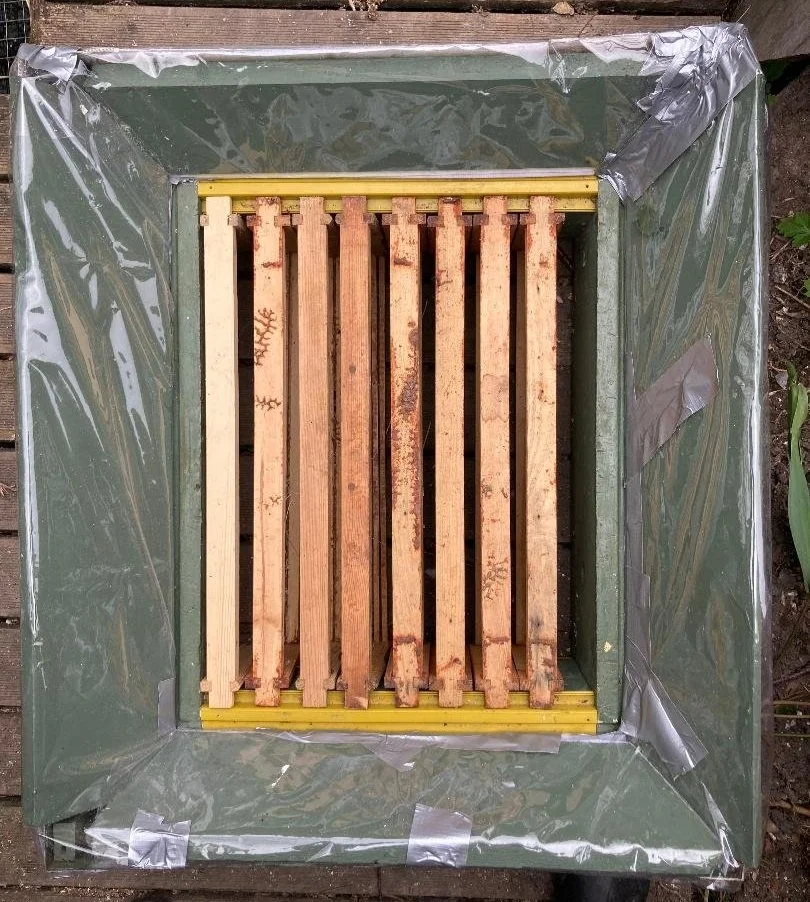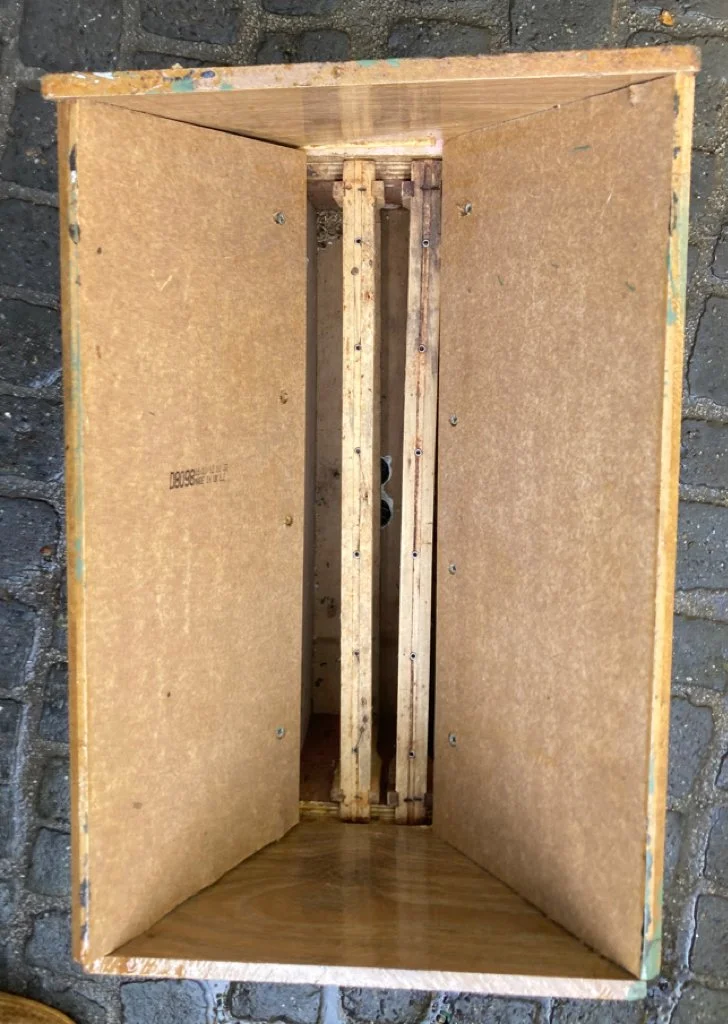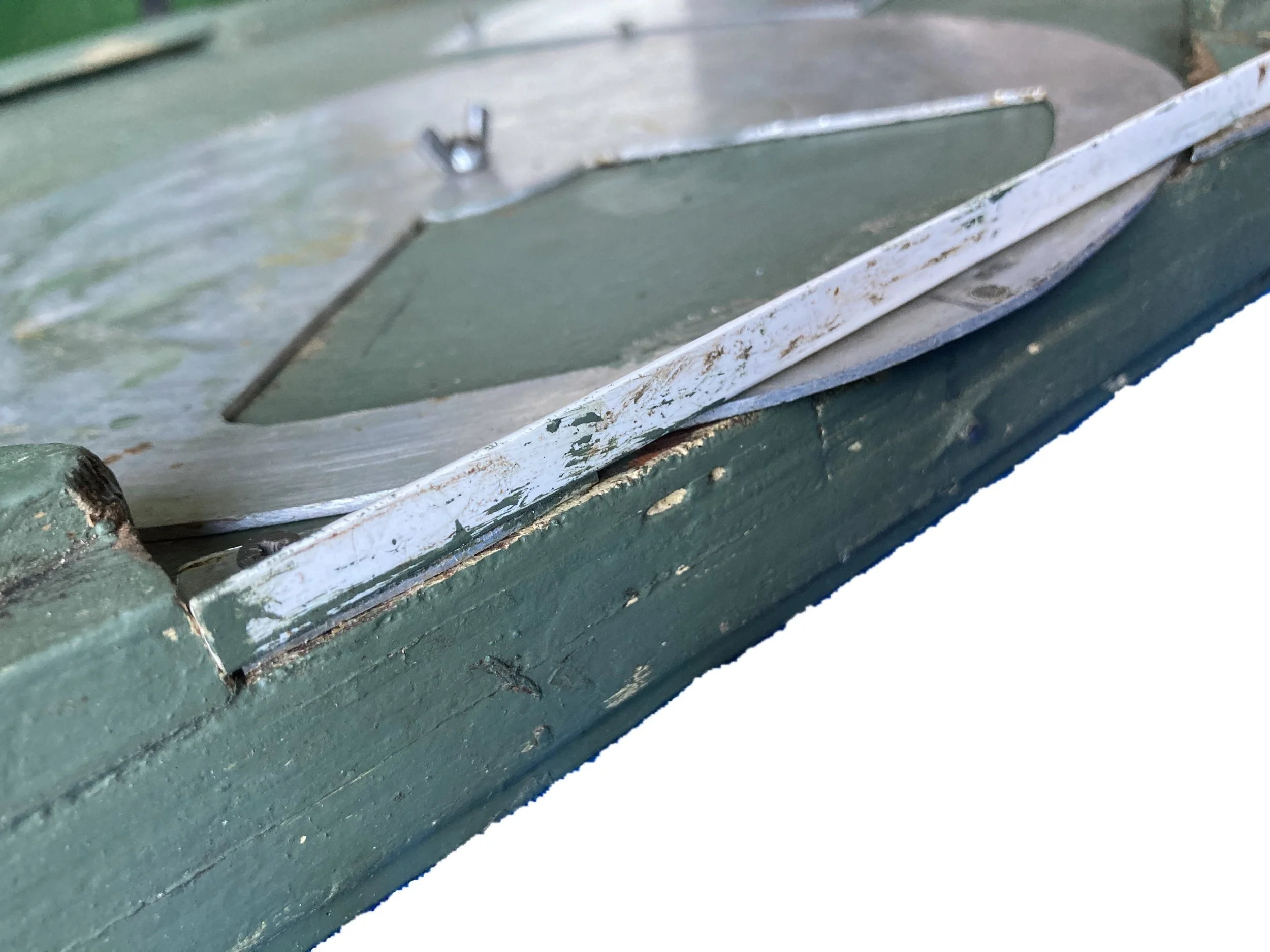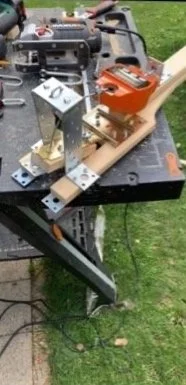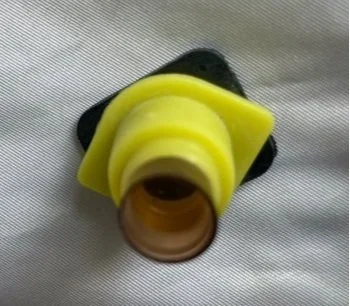
Innovations
To do better
Ideas
Each beekeeper develops their way of doing things through trial and error or by following the books. Here is a list of things I’ve learnt:
Queenless Movement Behaviour — persists after the Q is lost, runs in straight lines unlike the transient Q seeking behaviour visible on the front of the hive.
Closing poly hives without squashing bees
Brood timetable — a graphic way of presenting queen replacement and brood development.
Inkpin effect — bees get lost when their normal entrance is closed.
Hive Tooleater - likes ferrous objects.
How to prevent bees from chewing polystyrene
Mite drop after oxalic acid sublimation
Marking table and Every board etc. — things I’ve made — see below:
Equipment
Paradise Honey Hives are complete in themselves but can be embellished. I’ve enjoyed making standard equipment like ekes despite no training apart from being taught how to use carpentry tools when I was nine. So, if you fancy inventing a gadget or making a standard kit, have a go! But it will be tricky without a cutting table, bench press drill and corner clamps.
Eke - okay for Apiguard
Whisk - an extended tool to dissolve sugar
Fence - to prevent bees from getting lost
Funnel for adding bees to 3 frame nucs
Taranov board - for uneven ground
Crown of thorns - adapted for use with plastic frames
Everyboard - for manipulations
Cupkit - without handling the queen
Two colony bottom feeder - in progress.
Ekes
These rectangular frames match the dimensions of the top/bottom of a box. Their depth determines their usage. They do not match a bee space, so the bees tend to fill the area with burr comb and drone brood. Using a wooden / ply former may be good enough for making bits for other hives, but it is insufficient for the tolerances required for a Beebox hive (because of the rebate). So repetitively hold the eke against a hive body.
-

Corner clamp
-

This is 40mm deep, okay for Apiguard
-
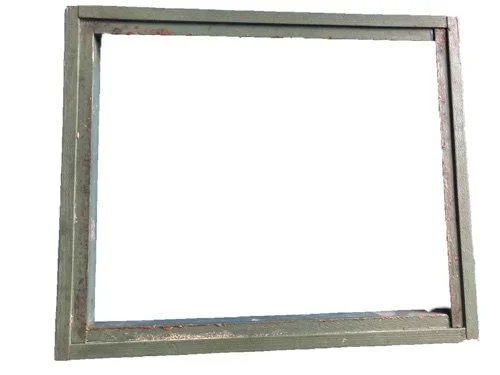
The result is difficult to see! Check it is level by frequently by presenting it to the box.
Crown Board
It consists of two parts. The lower one is the board, and the upper one is for access, observation, and to stop the bees from climbing out. The inner portion must fit precisely: 3 mm smaller than the inside dimensions of the box. The frame runners poke out, so it must be pushed in to position from below.
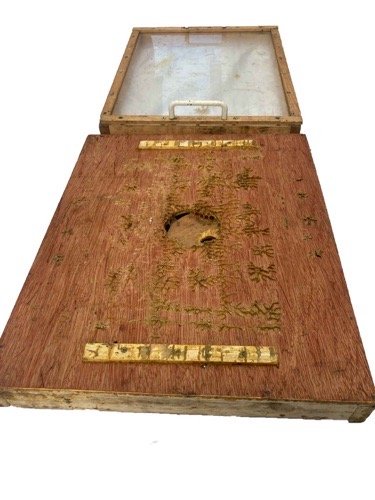
under surface
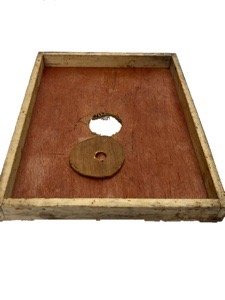
upper surface

handle of upper cover

Upper cover

Board in position in a box
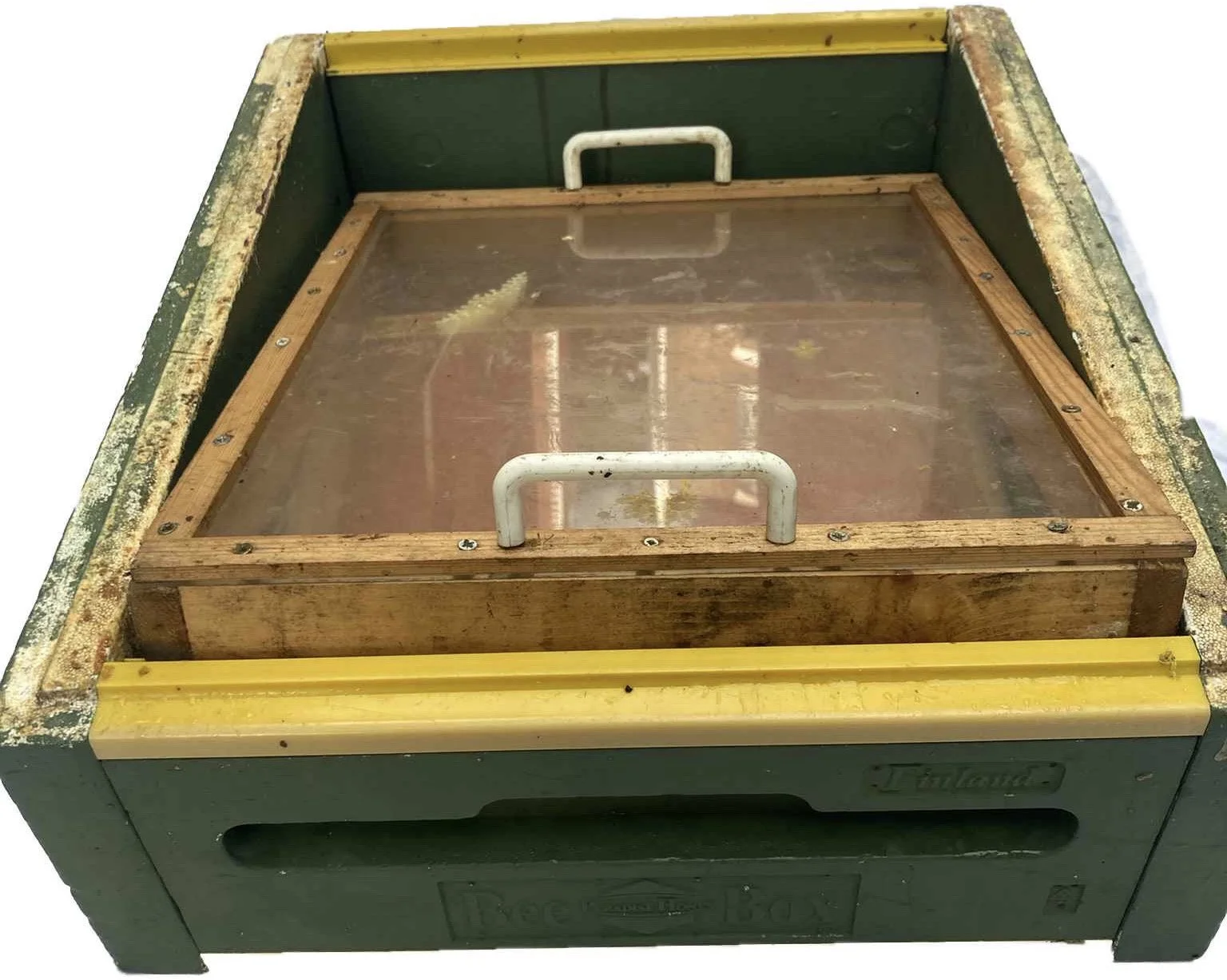
The inner/upper covers the crown board
Whisk
I’ve made a whisk extension. It flies around very eccentrically, but when used with a bucket of sugar and water, it will bash the last few crystals into solution.
Back to menu
Queen - push on marking cage
The dirty cage in the foreground is a modified Chinese cage.
I have shortened the prongs so that it is suited to plastic frames. The nylon thread makes it easy to see the queen.
Back to menu
Marking Table
I need three hands to mark a queen. This is my third. It is like a bridge. The upper surface of the bridge has four 4 cm vertical spikes (clothes hanger wires). The frame that contains the queen is placed on top. The queen is trapped, and I can take my time marking her.
Fence
The “fence” fits around the box and prevents bees from getting lost when they are shaken in. After a while, the bees that end up on the rim find their way into the hive body. However, in cool weather, they stay put and form huddles.
My first design was no good. Bees were prone to huddle against the walls. My modified version has sloping walls covered with PVC.
Funnel to assist shaking bees in to a nuc
Made out of discarded flooring, it won’t weather well.
Taranov board
Used to separate young bees along with the queen. The board tip needs to be at least 400 mm off the ground.
How it works for swarm control
Everyboard
This can be used as a Horsley, Brown (Beekeeping - a Seasonal Guide p59), or Cloake board, for uniting colonies and clearing bees and, as a Snelgrove board. I have made several designs.
Frame Fondant Feeder
I have attached two frames to feed fondant without repeatedly opening the hive.
Umbrella
Occasionally, I’m desperate to inspect a colony in the rain, and sadly, I don’t have anyone to hold an umbrella.
My helping hand is a black pipe attached to the hive stand. The pipe supports the umbrella pole.
Hive Stands
Everyone has their version, and this is mine. Joists are readily available in skips. None of my hives containing bees have blown over. However, stacks of empty boxes or combs have fallen. If a high stack falls, a box invariably breaks.
Hive weighing scales
Rather than try to assess the weight of a hive by hefting, it is lovely to have a more objective measurement. I have attempted to do it using the dynamics apparent in this diagram. The problem was that at a particular force, the stand tipped up, and my measurements were inexact. But if your apiary is level and your hives are near the earth, give it a go.
The spring-balance type weighing scale is attached via a wire to a board under the hive via a pulley.
A frame weighing scale. I could not get consistent results.
A friend made this apparatus.
Hive Shield
Here is a prototype, viewed from behind. It fits a nuc. It prevents wasps from entering the colony. I have seen a wasp enter, but it did not come out. Bees buzz confused by the holes on the outer aspect, and the guards hang around there. The bees soon learn to use the side entrance.
The second device is a good wasp deterrent. It fits snugly in the entrance. The bees fly through the ends of the electric trunking, but the wasps cannot figure it out. Thorne sells what appears to be a similar device for a reasonable price.
The problem with these devices is that the bees find it .difficult to ventilate the hive, so they cannot be used in hot weather.
Nicot Cupkit
I have tried my reversed version, and the Q refused to lay. A potential problem with the setup is that the workers may release her by digging under the cage.
For queen rearing without having to handle the queen.
I have cut out one side of the cage. The cage is usually orientated the other way around, with the entrance of the cups facing out, so the queen is trapped.
Another method of getting larvae in to cups is grafting. Kamon Reynolds demonstrates the method on YouTube
Images show the cups in which queens lay their eggs, Also a frame with sealed QC in cups.
Page BK 9.
This is the last page of the beekeeping section







